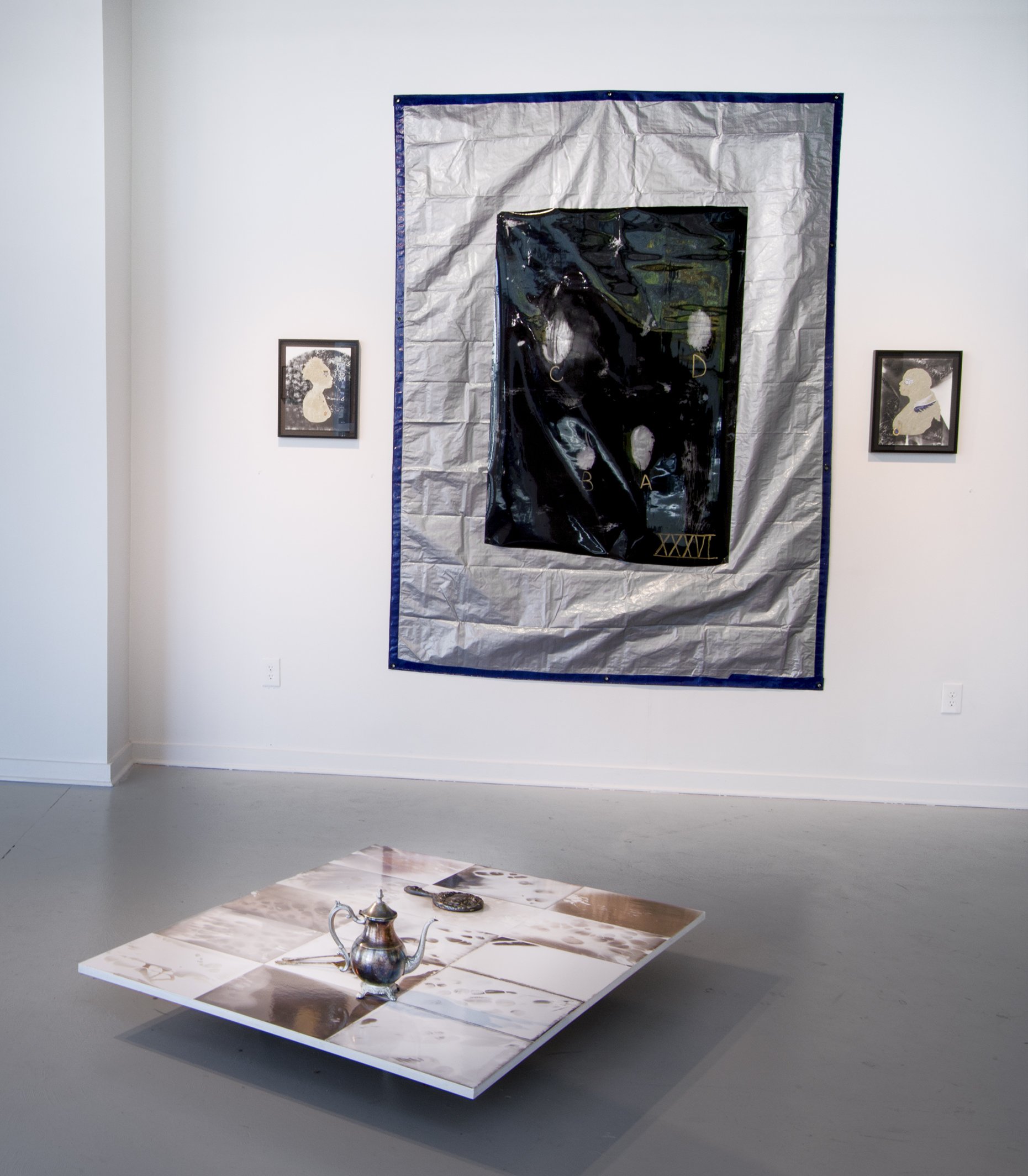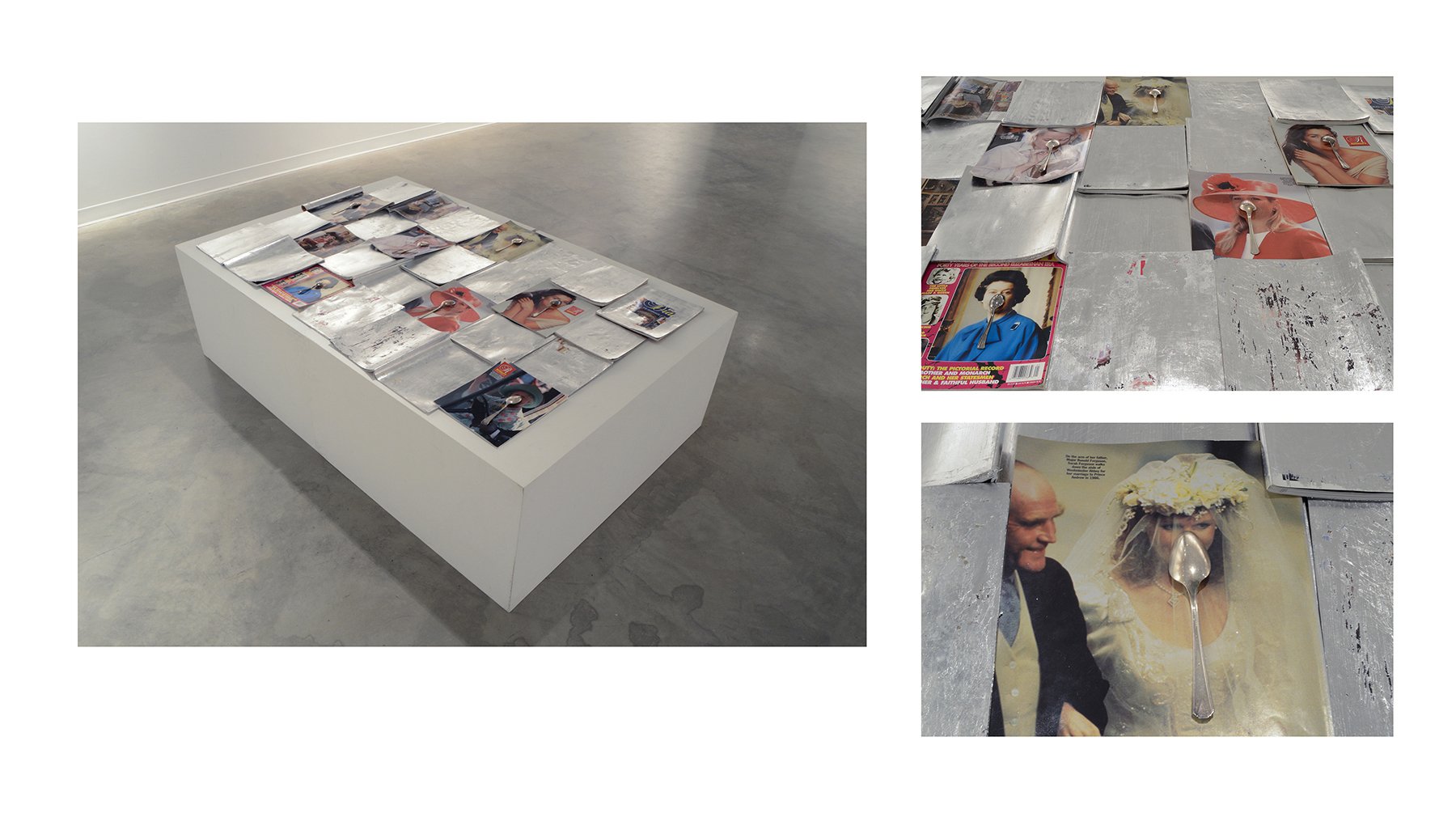River of Silver
Traditionally, when one thinks of silver it is associated with its use in currency, bullion and the production of silverware objects. It is a material basis of economic power, the wealth of family and nation, and the basis of various historical conquests, both of human and nature. In similar ways, silver-based analog photography’s significance to the development of modern visual culture, communications, and power relations cannot be overstated. Until the development of digital imaging technology, the process of recording, reproducing, and distributing a visual account of the people, places and things that make up the world relied on the physical properties of a reaction of silver halides to light and chemical. In this way the element silver has had a major impact, not only on science and the arts, but also contributed greatly to shaping the political and social spheres of everyday life.

River of Silver I: Gelatin silver, silver plated tea serving, MDF, floor dolly. The photographic materials used in this sculpture are made from depositing traditional silver gelatin paper into a mixture of developer and fixer, skipping the arresting stage or stop bath during development. The paper was then fixed completely so that it is no longer light sensitive. This experimental development procedure allows the silver on the paper to reverse so that some areas are reflective rather than black. The reflective silver on the paper tarnishes rapidly similar to the silver plated objects placed on top.

Installation view

River of Silver II: Gelatin silver, silver plated tea poy, silver serving spoons, silver hand mirror, MDF, floor dolly

River of Silver III: Royal magazines, silver leaf, silver spoons